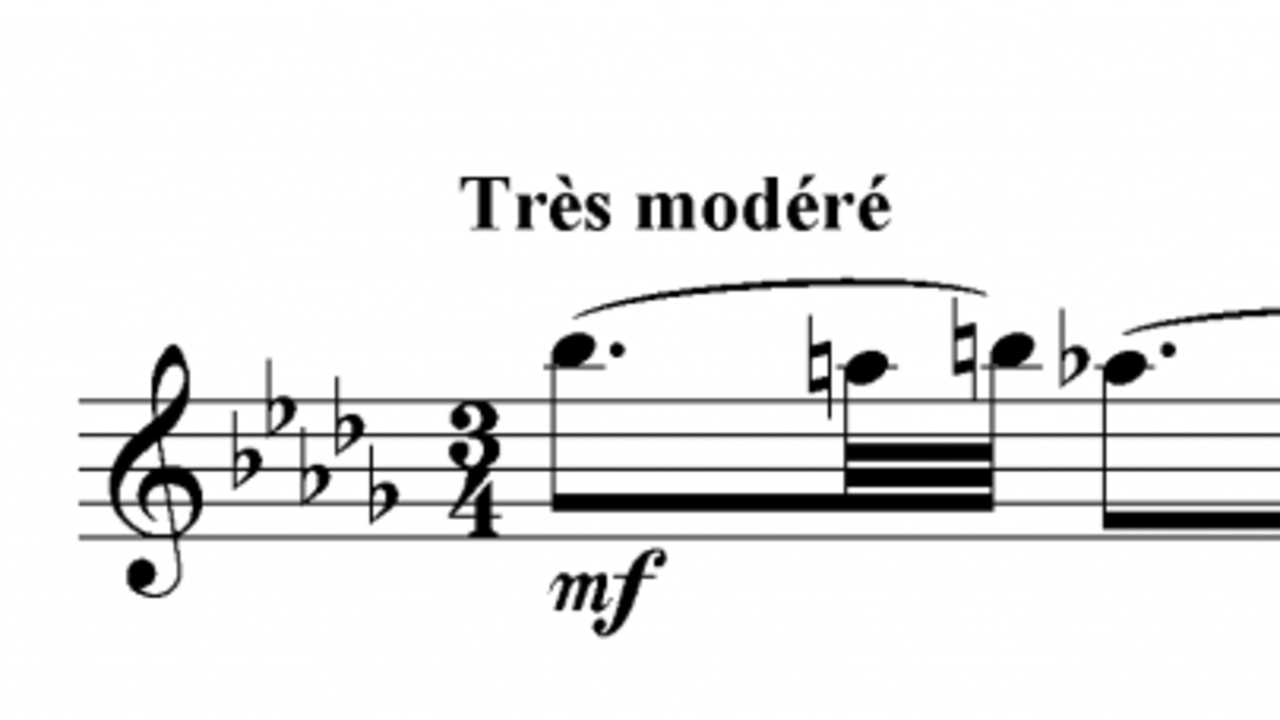
Sheet Music for Flute
Mar 25, 2015Sheet Music for Flute - Through the Ages
In the Classical music world there is an overabundance of sheet music for flutes. From Baroque concerti to contemporary chamber music and everything in between. However, this repertoire is not static. As the flute evolved and as musical tastes changed, the music for the flute changed as well. Below, you’ll find out more about the ever-changing sheet music for flute. Each section contains a short explanation about each of the eras of classical music and what was going on with the flute during those times. Knowing the history of your instrument and musical tradition is vital if you want to influence that tradition in the future.

The Baroque Era
In reality, sheet music for flute has been around much longer than the Baroque era, which runs from roughly 1600-1750 (although these dates are still up for debate among historians). However, when it comes to the contemporary study of Western classical music, the Baroque era is typically where it begins. While this starting point may seem a bit arbitrary, there is some logic behind it. The Baroque era is the time where we begin to see the flute (among other instruments) begin to really resemble its current form. This period is also when we begin to see the beginnings of modern ensembles, such as the orchestra. When it comes to composers in the Baroque era, the three biggest names that come to mind are J.S. Bach, Antonio Vivaldi, and George Fredric Handel. All of whom wrote lots of fantastic sheet music for flutes. When playing flute music from Baroque composers, it’s important to remember that their idea about the role of the musicians was quite different from ours. Because of this, you’re likely to find sheet music for flute and other instruments has no dynamic or articulation markings. Baroque composers would have expected flute players to supply the articulations and dynamics themselves. This makes Baroque music a great way to nurture your own compositional creativity!
The Classical Era
The Classical era runs from about 1700 to 1800. As with the Baroque era, these numbers are not set in stone. You’ll notice that the Classical dates overlap with the end of the Baroque dates, which makes classifying composers who wrote during this transitional time a bit difficult. However, regardless of the dates used to define it, the Classical era has given us some of the most famous sheet music for flute. This popularity of sheet music for flute music occurred for a few reasons. One of the most important was the rise of the public concert that took place during the Classical era. Before this time, much of the music being written was for some other institutional purpose. Most commonly it was being composed for church services. However, this time period is when we begin to see Western art music become an institution itself. Some famous composers during this time include Mozart, Haydn, and the children of J.S. Bach, all of whom have numerous solo works for the flute. When talking about this time period, it’s also important to touch on the confusion of the term “Classical”, which can refer specifically to this time period or to Western art music in general. Typically to distinguish between these two concepts, historians will use the capitalized “Classical” to refer to this time period and lowercase “classical” to refer to art music in general.
The Romantic Era
The dates typically associated with Romantic music are 1800-1900. Like most musical traditions, it was in some part a reaction against the traditions that came before it. In this case, Romantic composers were looking to move beyond the Enlightenment formalism of their Classical predecessors into a more subjective, emotional type of composing, which is great when looking for sheet music for flutes. The lyrical quality of the instrument fits right in with the ideals of Romanticism, which means that this era produced a number of lush, beautiful flute solos. The Romantic era is also the time in Western music history when the manufacture of instruments becomes standardized, meaning that one type of flute became the dominant, popular choice. In this case, it was the Boehm flute, which should be recognizable to most contemporary flute players, since only a few changes have been made to it since it was invented in 1847. Some famous composers from this time period include Johannes Brahms, Franz Schubert, and Ludwig van Beethoven - all of whom wrote famous sheet music for flutes.
20th Century and Beyond
Of all the eras of classical music, the twentieth century is the hardest to summarize. During the 1900s composers began writing in a variety of eclectic styles. Some of which borrowed heavily from earlier traditions and others which created completely new theories of music.
One common convention of the 20th century is the use of extended techniques on the flute. This term covers a wide variety of playing styles that push the flute beyond its commonly accepted limits and includes things like multiphonics (playing two or more notes at the same time), microtones (notes that are less than a half step apart), and a variety of percussive air and tonguing effects.
Because of all these new innovations, sheet music for flute from this time period can often feel foreign or exceptionally difficult for a musician. However, these pieces are not without their value, and works especially from the early twentieth century are quickly becoming standards in the flute repertoire. Some famous 20th century composers that have written sheet music for flute include Philip Glass (Arabesque for in Memoriam for Solo Flute), Luciano Berio (Sequenza I for Flute), and Morton Feldman (Flute and Orchestra).



